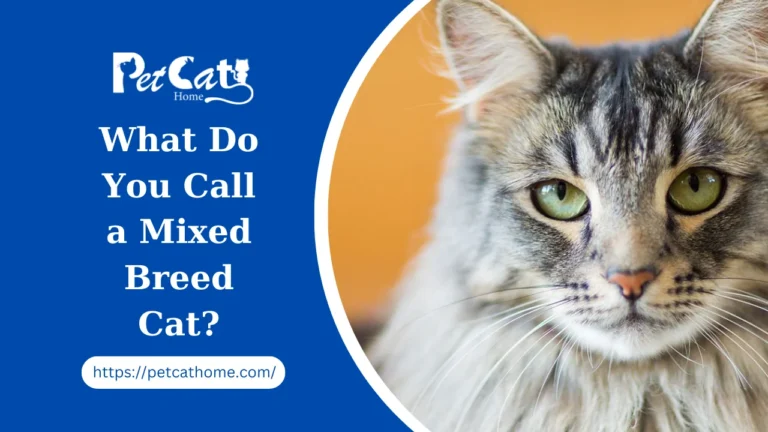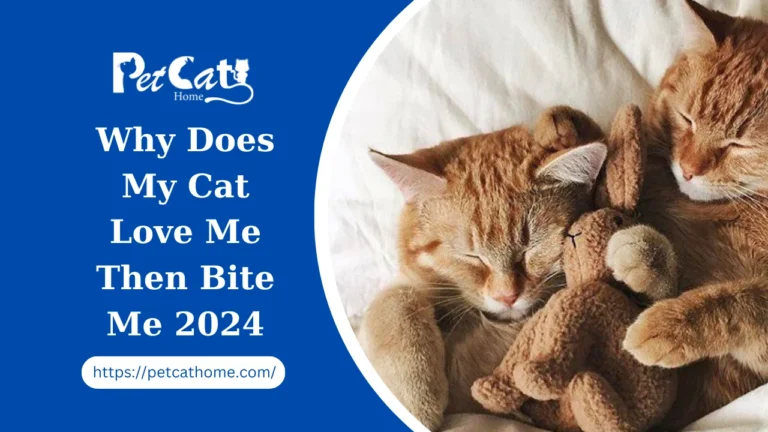Can I Feed My Cat Different Brands of Food
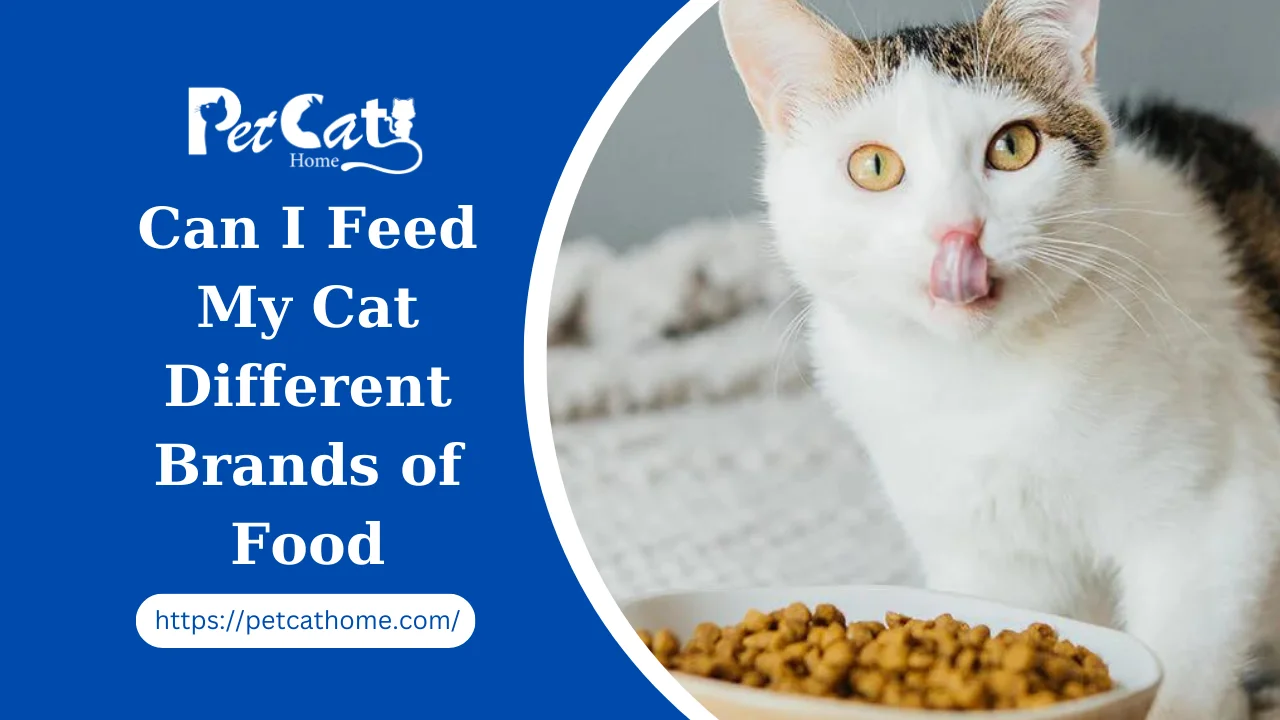
Your cat’s well-being must know what makes a good diet for it. This involves thinking about the kind of food, how often you feed it, and whether or not switching up the brands in your diet could be good for your cat’s health.
Consistency in Cat Food
A cat’s overall health and digestive health depend on having a consistent diet. Nutritional imbalances, pain, and digestive problems can result from frequent dietary changes.
Importance of Consistency
Due to their habitual nature, cats may become stressed out or have digestive distress when their diet is suddenly changed. Their habit and digestive health are maintained by consistency.
Risks of Frequent Changes
Frequent switching of brands or varieties of cat food can cause digestive issues, such as diarrhea or vomiting, since their digestive systems may not be able to adjust.
Variety in Cat Food
Although maintaining consistency is important, adding variety to a cat’s diet can help them receive a greater variety of nutrients and flavors.
Benefits of Diversity
It is possible to prevent dietary deficiencies and increase children’s interest in meals by offering a variety of textures, flavors, and components from different brands.
Risks of Mixing Brands
But hastily combining several brands could make them queasy. New brands must be introduced gradually so that their digestive systems have time to adjust.
Transitioning Between Brands
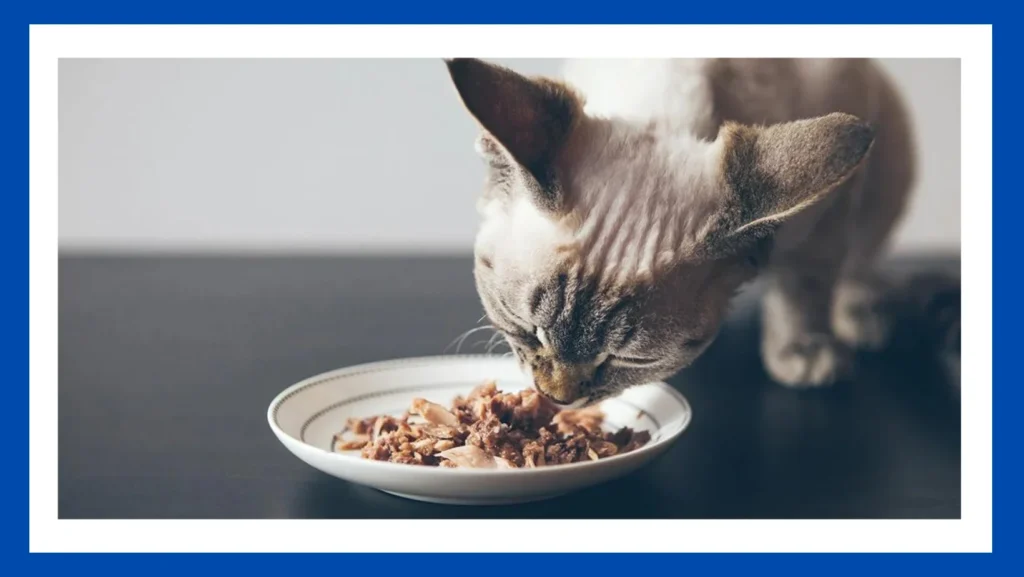
It’s critical to switch brands gradually to avoid gastrointestinal problems or food allergies.
Methods for Slow Transitions
Your cat can adjust without experiencing digestive distress if you gradually increase the quantities of the new brand over a few days as compared to the present one.
Tracking Changes in Health
If your cat exhibits changes in feces, appetite, or energy levels throughout the switch, it may be a sign that the new brand is a good fit for them.
Comprehending Label Data
Selecting the best brands of cat food requires careful reading and comprehension of the nutritional information on the labels.
Understanding Nutritional Data
Look for certain nutritional components that are important to your cat’s health, such as the amount of protein vitamins, and minerals.
How to Choose High-Quality Foods
High-quality ingredients free of artificial additives or fillers help your cat eat a healthy diet.
Special Dietary Needs
Certain cats may require a different diet because of age-related changes in their bodies or because of health issues.
Taking Care of Particular Medical Conditions
Creating a diet specifically designed to treat health conditions like allergies or kidney illness can be facilitated by speaking with a veterinarian.
Age-Related Dietary Adjustments
Cats’ nutritional requirements vary with age. For the sake of their general health, their diet must be modified to accommodate these shifting needs.
Creating a Balanced Diet
Creating a balanced diet for your cat requires consulting a veterinarian.
Including Different Nutrients
Proteins, lipids, vitamins, minerals, and water intake tailored to your cat’s requirements should all be included in a balanced diet.
Common Misconceptions
There are several myths about giving different kinds of food to cats that need to be cleared up.
Dispelling Myths
Better feeding practices can be guided by debunking myths about dietary variety and by offering factual information.
Resolving Issues
addressing issues that may develop from feeding multiple brands, such as allergies, obesity, or nutritional inadequacies.
Observing Cat’s Response
When making dietary changes for your cat, it’s important to pay close attention to their responses and health markers.
Keeping an eye on health and behavior
The appropriateness of the diet can be determined by alterations in behavior, coat condition, energy levels, and litter box behaviors.
Indices of Unease or Allergies
Keep an eye out for symptoms like diarrhea, vomiting, or skin problems, as these could point to allergies or discomfort related to a specific brand.
Can I Feed My Cat Different Brands Of Food?
Everybody is aware that every meal should include a range of foods. It’s not only about what tastes good; to obtain adequate nutrition, experts typically recommend that we consume “a rainbow” of meals on our plates. What about your kitties, though? Is it possible to give your cat food from various brands?

You can indeed give your cats food from different brands. Giving your cats a variety of brands and types of wet food is perfectly acceptable. To be honest, it’s a terrific way to make sure their nutrition is well-balanced.
This post will discuss the benefits of giving your feline friend a variety of brands of food.
Can I Feed My Cat Different Brands Of Food?
As long as your cat isn’t exhibiting any symptoms of disease, you can give it food from different brands.
The causes can be anything from acute fussiness to more general “sensitive stomach” problems that resist change, such as inflammatory bowel disease or food allergies.
Experts would highly advise against switching if your cat is doing well on a balanced, nutritionally adequate food that accommodates her whims and medical needs.
However, as long as your cat’s digestive system can take it, a diversified diet has benefits.
All of a cat’s basic (with a focus on the basic) dietary needs should be satisfied by any commercially prepared, life-stage-appropriate food that is designated as nutritionally complete, even if it is that cat’s only source of nutrition.
Not all commercially prepared diets are created equal, and our knowledge of feline nutrition isn’t flawless. There could be a slight difference between the three brands in terms of this, that, and something else.
Hedging your bets can involve switching up your cat food supply in the hopes that, taken as a whole, they will supply exactly what’s needed.
If you regularly supply both dry food and canned food, you are already partially fulfilling this role.
Combining two or more different types of dry food in the bowl is another way to further change things up; this method also works if you serve only dry food. Smaller bags of food will preserve freshness because you will be eating through them more slowly.
How Do I Switch Dry Cat Food Brands?
You can switch dry cat food brands by: –
- Combine her new cat food with her current diet to start the transition. Gradually increase the quantity of fresh cat food while decreasing the amount of existing cat food. Continue doing this for the following seven days. Delaying the switch will help your cat adopt the new diet more readily and have fewer gastrointestinal problems.
- Remember to exercise patience. Ten days is a possible transition period, or a little longer if the cat is fussy, elderly, or ill.
- In certain situations, such as severe stomach problems, your veterinarian could advise against a transition and tell you to start giving the new cat food straight away.
- CORE Simply Shreds is a food topper that you may add to your cat’s dry food. In addition to enjoying the flavor and texture, your cat will get vital nutrients for a well-balanced diet. To make sure they consume the full dish, you can also mix the topper with the dry food.
- Occasionally, giving your cat a few bits of dry food by hand might ease the adjustment. Use the dry food as a treat or snack first to help them get used to the texture and flavor before switching them over.
Although there may not be a perfect transition, your cat won’t go without food. Give them time to get used to the change by introducing it gently and gradually.
Switching Wet Cat Food Brands Benefits
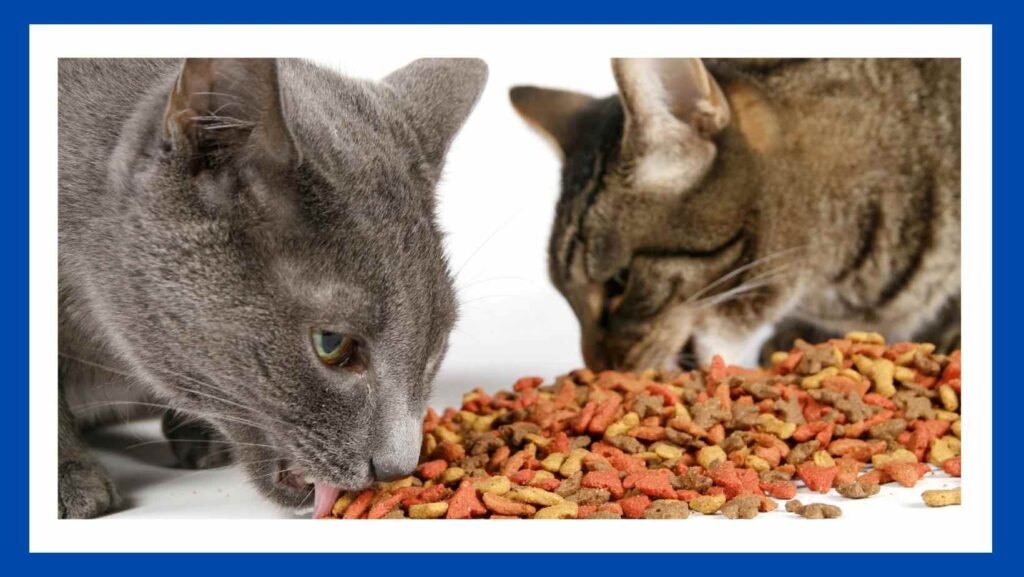
There are several benefits of switching wet cat food brands. Some of them are: –
1. Reduce the Cat’s Pickiness
By switching up his food, you can stop your cat from becoming accustomed to a certain brand.
Until you need to adjust your cat’s diet, it’s not a huge deal.
Even if you think you won’t alter his diet, you never know when a doctor’s diagnosis will call for dietary adjustments, or when a food producer will stop making a particular brand of food or even alter its recipe.
And what happens if you suddenly run out of cat food and can’t find a particular brand for the next few days?
2. Keeping Up To Date
It takes a lot of work to choose the best commercial cat food brand. It takes more work to recognize that a better one might be around the corner once you’ve found one.
The pet food market is changing quickly, and new products are coming out all the time. Ten years ago, cat chow that was deemed premium was now deemed junk food.
If you regularly add new pet foods to your cat’s diet, you can acquire the habit of monitoring these adjustments and learning more about them.
3. Balanced Diet
The pet food industry does not have comprehensive and balanced formulas, just as the human food industry does not have such formulas.
The nutritional requirements of your cat fluctuate throughout the day. It’s a risky assumption to assume that a single cat diet has every ingredient required for good health.
Why not give your cat more than one “complete” but different diet to increase his chances of being healthy? The most effective method to accomplish this is to vary the kind of food you give your cat with each meal.
How Do You Change Wet Cat Food Brands?
You can change wet cat food brands by: –
Similar to how you would with dry food, you might want to gradually introduce the new diet over a week or so, depending on your cat’s health, to prevent stomach problems.
To make it simpler for your cat to reach the food, use a flat dish. Using a plate can also lessen the chance of whisker stress, which is a condition when a cat rubs against the food bowl and causes hypersensitivity and discomfort in its whiskers.
Room-temperature food can be easier to eat and more enticing to our feline companions than refrigerated ones. If you must refrigerate leftovers, let them come to room temperature by leaving them out briefly before serving your cat.
Try out several textures to find out what your cat likes. The market offers patties, gravies, minced alternatives, sliced meats, and morsels.
Since cats prefer wet food over dry food, the switch is typically simpler. However, wet food can be heavy in fat, so choose the proper option for your cat’s age, activity level, and health.
Mixing Cat Food Brands
It’s important to remember that if you switch up your cat’s diet too soon, it could experience vomiting, diarrhea, or decreased appetite.
While we may be eager to finish this changeover as quickly as possible, there are a few considerations when changing cat food.
Just as humans might have adverse consequences from dietary changes, cats can also experience them from new foods. Your cat can have vomiting, diarrhea, or even lose its appetite if you switch too soon.
Although we are in charge of our cat, our vets are professionals in the field of medicine. Consult them about possible diet choices, and work together to make sure your cat is making a safe dietary change.
New Cat Food Feeding Tips
New cat food feeding tips are: –
Make space for seclusion and a serene eating area far from other cats and noisy people.
Feed your cat by hand initially, if possible. The person who feeds the cat ought to be friendly with the animal.
Provide canned or moist cat food in addition to dry cat food.
To guarantee the quality and freshness of all of your cat foods, make sure they are stored correctly.
Before feeding your cat, bring any canned or moist cat food that has been refrigerated to room temperature. Stir well to distribute “hot patches” that develop when warming in the microwave. If it’s too hot to touch, it’s too hot to feed.
Use a level plate or saucer to serve canned cat food so your cat’s whiskers don’t rub against the dish’s edge. Pour a small quantity of warm, moist cat food on the dish’s edge beforehand to make it simpler for your cat to lick.
Be sure to discuss with her veterinarian the best way to switch her cat food if your physician has recommended a special therapeutic kind for a particular health concern. If there are any special circumstances, she might be able to provide you and your pet with some further advice.
The properties and feeding guidelines of therapeutic cat food are unique. If your cat prefers dry, moist/canned, or both types of food, let your veterinarian know so they may recommend one that suits your cat’s needs. The effect of therapeutic cat food might be greatly diminished and your cat’s health may be at risk if you add store-bought or pet store meals.
FAQs
Is it bad to keep switching cat food brands?
No, as long as the cat is not exhibiting any symptoms of sickness, switching cat food brands is not harmful. It’s usually acceptable to switch brands of cat food. As long as the new food is full and balanced, suitable for your cat’s life stage, and they enjoy the taste, there’s no reason you can’t alter things.
Why does my cat only like one brand of food?
Because certain brands of food have a strong flavor and scent that cats find enticing, your cat might only enjoy one brand of food. The cats find solace in their conditioned perception that food is represented by a certain mix of texture, scent, and flavor.
Can I mix wet and dry cat food?
As long as the dog or cat food is of superior quality and meets your pet’s nutritional needs as well as other health standards, you can blend dry and wet ingredients. Premium wet and dry foods are designed to provide your pet with all the essential nutrients, including vitamins, minerals, fat, protein, and other elements, that they need to flourish.
Can cats eat only dry food?
A lot of cat owners just give their animals dry food. Dry food is okay as long as it’s well-rounded and complete. Give lots of fresh water to cats who only eat dry food, especially if they are prone to urinary tract blockages.
Can cats only eat wet food?
Many people think that cats only need to eat canned food and that they would become sick if they ate dry food. Most cats, though, can get by on either. But cats with kidney disease, diabetes, or urinary tract issues can benefit from wet food’s higher moisture content.
Conclusion
When deciding which brands of food to give your cat, much thought and observation are needed. Maintaining your cat’s health and well-being requires reading label information, striking a balance between regularity and variety, and keeping an eye on their reaction.

